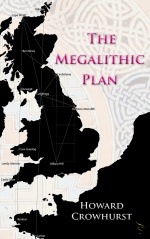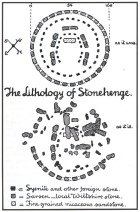<< News >> New CEO for Historic Scotland
Submitted by vicky on Thursday, 24 June 2004 Page Views: 9402
Other Archaeology
Mr Graham will succeed Graeme Munro who is due to retire in August 2004. Mr Munro was appointed first Director and Chief Executive of Historic Scotland when it was established in 1991. He will retire just after his 60th birthday having been with the civil service for over 36 years.
Commenting on his retiral Mr Munro said:
"It has been an enormous privilege to have been involved in the creation of Historic Scotland and to have led it during a period when so much has been achieved, and when the importance of the built heritage has come to be more widely appreciated.
"I have enjoyed the support of a great team of colleagues. I wish them and my successor all the very best for the future."
John Graham welcomed the challenge of leading Historic Scotland. He said:
"I am pleased to be joining Historic Scotland at such an important time. As a keen supporter of its work I recognise that there are many challenges facing the agency and. I look forward to working with my colleagues to implement the findings of the recent Historic Scotland review."
Minister for Tourism, Culture and Sport Frank McAveety welcomed Mr Graham's appointment. He said:
"I welcome Mr Graham's appointment as Historic Scotland's new Chief Executive. The recent review recommended a number of changes to the way in which Historic Scotland operates. Mr Graham will now be charged with delivering those ambitious plans for how our historic environment is managed."Historic Scotland has an important role on behalf of Scottish Ministers in safeguarding and presenting our built heritage. The heritage is an enormous asset to Scotland both economically and culturally.
John Graham was born 1950. Educated at the Edinburgh Academy and Corpus Christi College, Oxford (BA in Classics and Ancient History). He joined The Scottish Office 1972. Private Secretary to Minister of State 1975-76.
Various posts dealing with Housing, Electricity and General Industry Policy. Assistant Secretary in Scottish Economic Planning Department 1982. Private Secretary to the Secretary of State (The Rt Hon George Younger MP) 1983-85. Head of Planning Division 1985. Head of Central Finance Division 1990. Under Secretary and Head of Local Government Group 1991. Head of Finance Group and Principal Finance Officer 1996. Secretary of Scottish Office Agriculture, Environment and Fisheries Department from June 1998 to June 1999. Secretary and Head of Scottish Executive Rural Affairs Department (now Environment and Rural Affairs Department) from 1 July 1999.
Historic Scotland was created in 1991 and is an agency of the Scottish Executive. Education Department. The agency is directly responsible to Scottish Ministers. and all the functions are carried out on their behalf.
The agency's key objective is to protect and conserve Scotland's built heritage and encourage its appreciation and enjoyment by the public. Historic Scotland care for around 330 properties in all parts of the country and which span 5,000 years of history. Among them are sites of unique importance, like the Neolithic tomb of Maeshowe which is a World Heritage Site and internationally-famous icons like Edinburgh Castle.
Source: Scottish Executive 23/06/2004






 We would like to know more about this location. Please feel free to add a brief description and any relevant information in your own language.
We would like to know more about this location. Please feel free to add a brief description and any relevant information in your own language. Wir möchten mehr über diese Stätte erfahren. Bitte zögern Sie nicht, eine kurze Beschreibung und relevante Informationen in Deutsch hinzuzufügen.
Wir möchten mehr über diese Stätte erfahren. Bitte zögern Sie nicht, eine kurze Beschreibung und relevante Informationen in Deutsch hinzuzufügen. Nous aimerions en savoir encore un peu sur les lieux. S'il vous plaît n'hesitez pas à ajouter une courte description et tous les renseignements pertinents dans votre propre langue.
Nous aimerions en savoir encore un peu sur les lieux. S'il vous plaît n'hesitez pas à ajouter une courte description et tous les renseignements pertinents dans votre propre langue. Quisieramos informarnos un poco más de las lugares. No dude en añadir una breve descripción y otros datos relevantes en su propio idioma.
Quisieramos informarnos un poco más de las lugares. No dude en añadir una breve descripción y otros datos relevantes en su propio idioma.